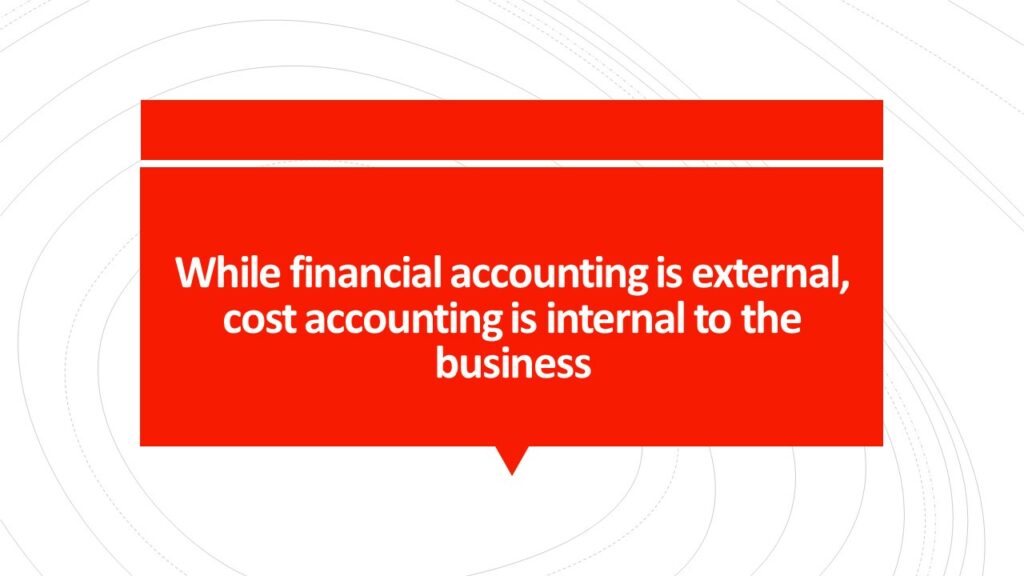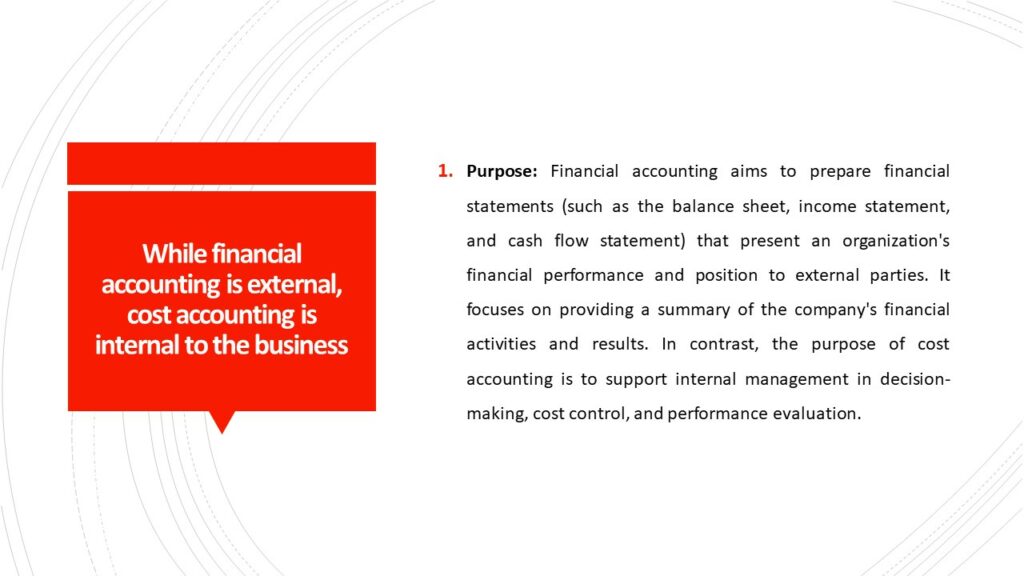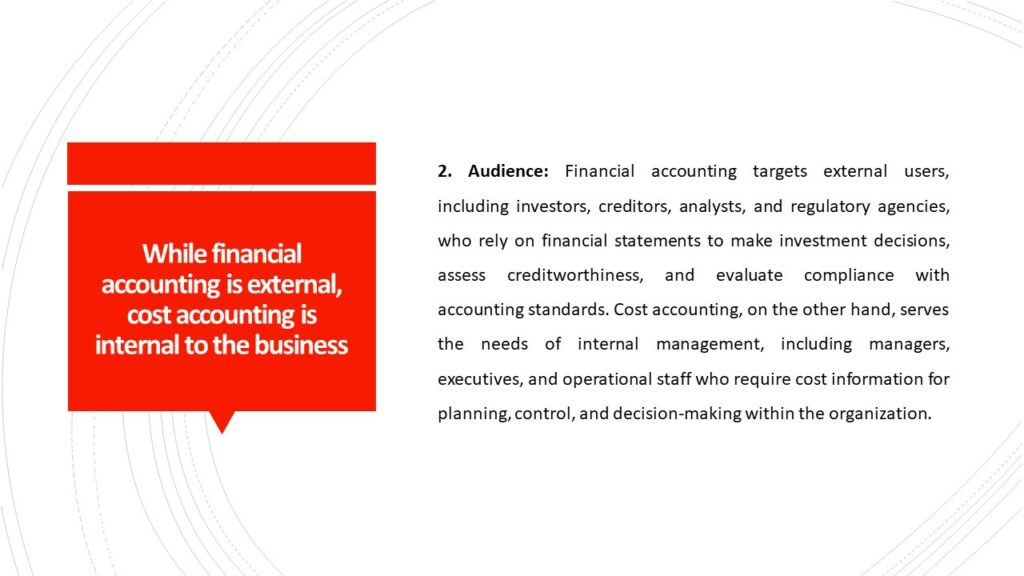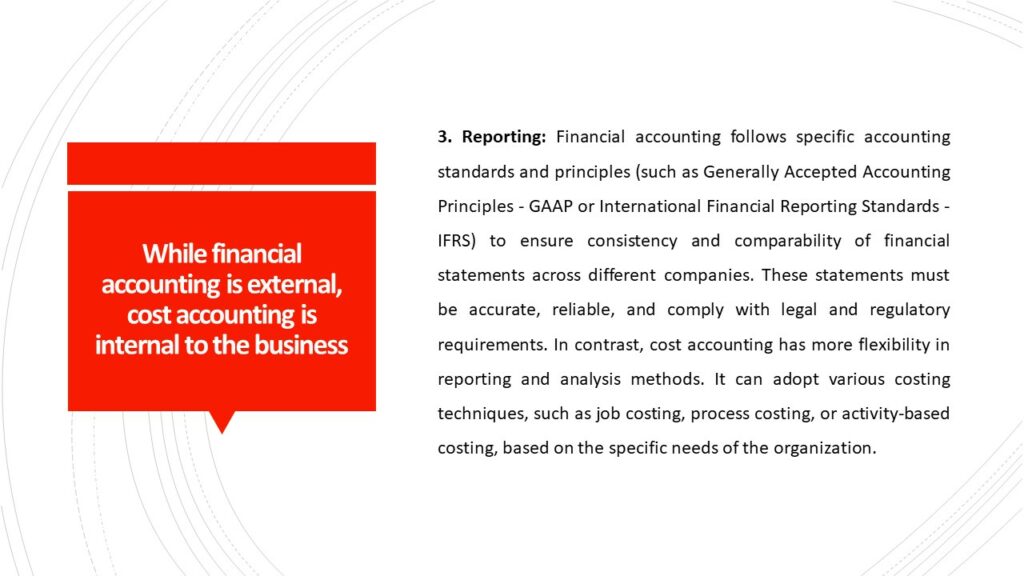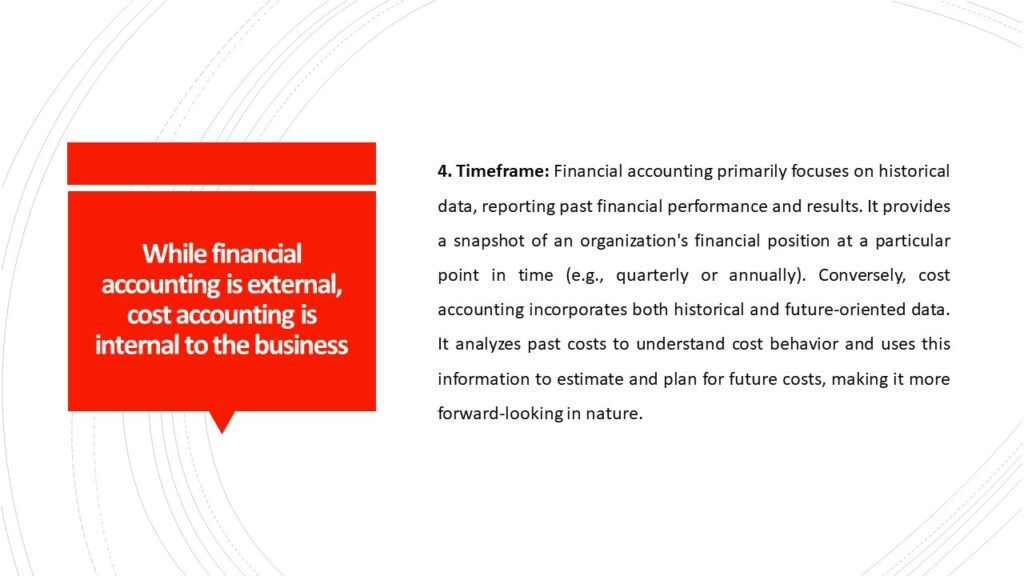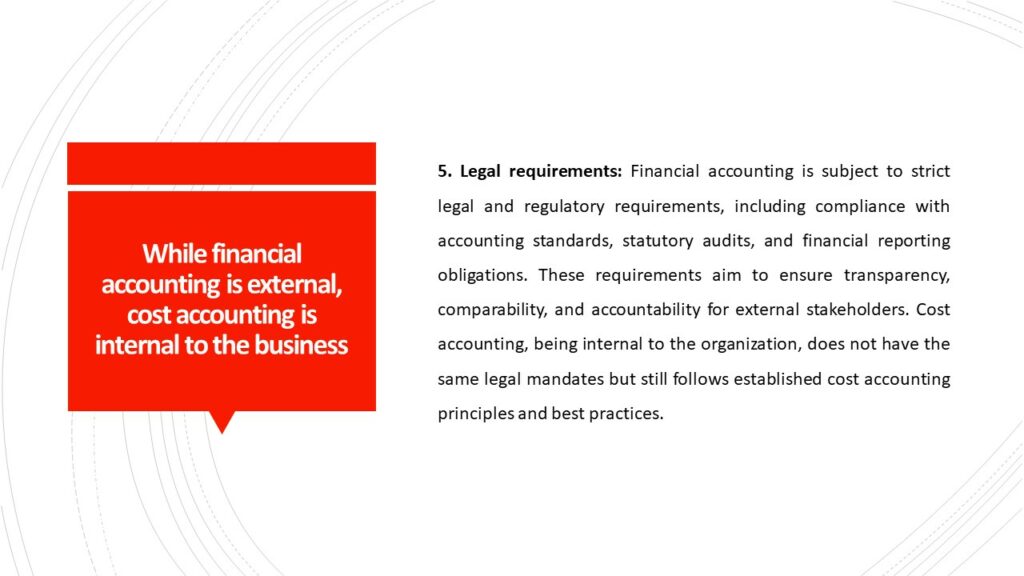While Financial Accounting is external Cost Accounting is internal to the business. Discuss
The distinction between financial accounting and cost accounting lies in their focus and audience. Financial accounting is primarily concerned with providing financial information to external stakeholders, such as investors, creditors, regulatory bodies, and the general public. On the other hand, cost accounting focuses on gathering and analyzing cost-related data for internal use within the organization.
Here are the key differences between financial accounting and cost accounting in light of this statement:
- Purpose: Financial accounting aims to prepare financial statements (such as the balance sheet, income statement, and cash flow statement) that present an organization’s financial performance and position to external parties. It focuses on providing a summary of the company’s financial activities and results. In contrast, the purpose of cost accounting is to support internal management in decision-making, cost control, and performance evaluation.
- Audience: Financial accounting targets external users, including investors, creditors, analysts, and regulatory agencies, who rely on financial statements to make investment decisions, assess creditworthiness, and evaluate compliance with accounting standards. Cost accounting, on the other hand, serves the needs of internal management, including managers, executives, and operational staff who require cost information for planning, control, and decision-making within the organization.
- Reporting: Financial accounting follows specific accounting standards and principles (such as Generally Accepted Accounting Principles – GAAP or International Financial Reporting Standards – IFRS) to ensure consistency and comparability of financial statements across different companies. These statements must be accurate, reliable, and comply with legal and regulatory requirements. In contrast, cost accounting has more flexibility in reporting and analysis methods. It can adopt various costing techniques, such as job costing, process costing, or activity-based costing, based on the specific needs of the organization.
- Timeframe: Financial accounting primarily focuses on historical data, reporting past financial performance and results. It provides a snapshot of an organization’s financial position at a particular point in time (e.g., quarterly or annually). Conversely, cost accounting incorporates both historical and future-oriented data. It analyzes past costs to understand cost behavior and uses this information to estimate and plan for future costs, making it more forward-looking in nature.
- Legal requirements: Financial accounting is subject to strict legal and regulatory requirements, including compliance with accounting standards, statutory audits, and financial reporting obligations. These requirements aim to ensure transparency, comparability, and accountability for external stakeholders. Cost accounting, being internal to the organization, does not have the same legal mandates but still follows established cost accounting principles and best practices.
In summary, financial accounting focuses on providing external stakeholders with a comprehensive view of an organization’s financial performance, while cost accounting is an internal tool used for decision-making, cost control, and performance evaluation within the organization. Financial accounting follows strict rules and regulations to ensure the accuracy and reliability of financial statements, whereas cost accounting allows for more flexibility in reporting and analysis methods tailored to internal management needs.
